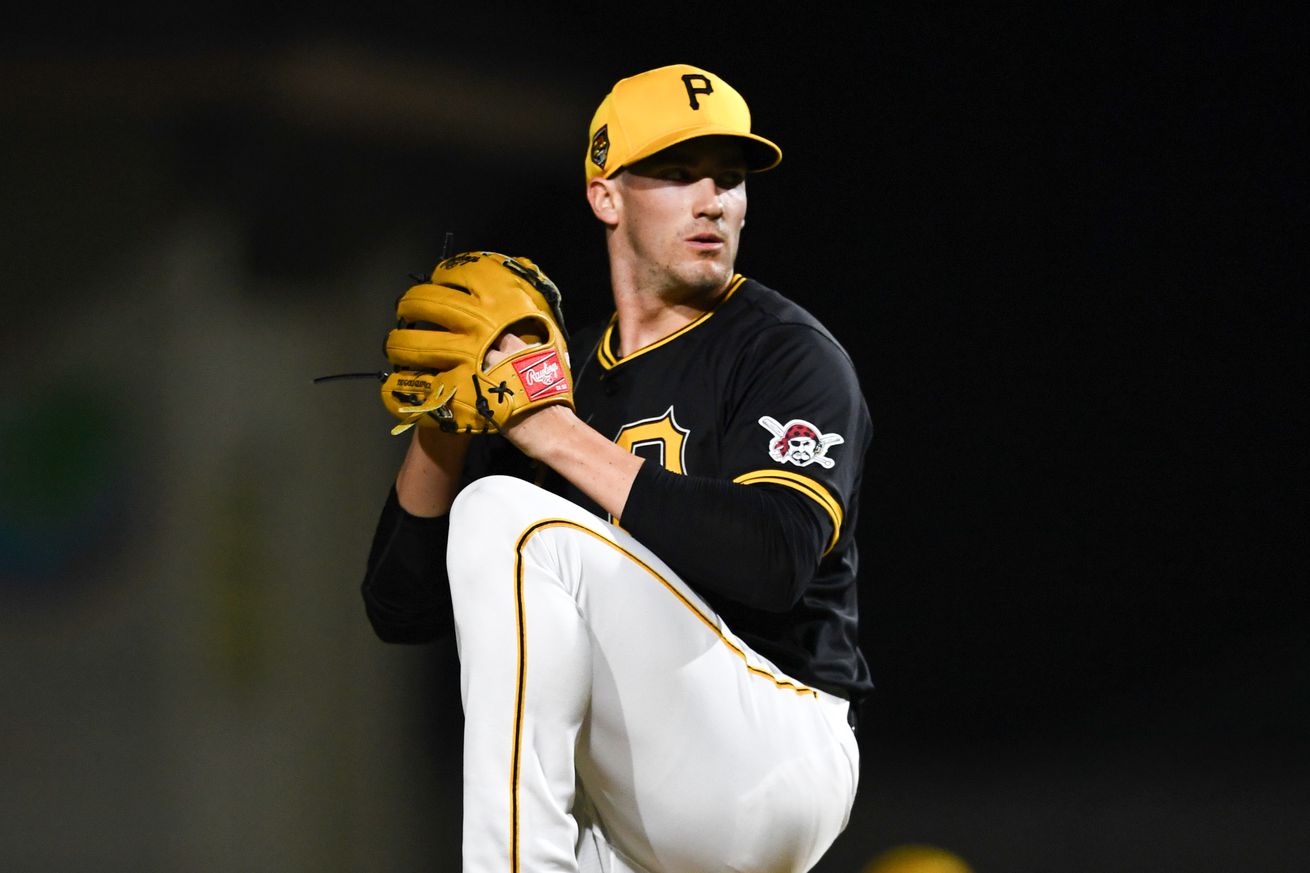
The righty, picked up at the trade deadline from the Pirates, has intriguing stuff but needs to harness his control.
On July 30, the day of the MLB trade deadline, Mike Elias and his staff made a chaotic flurry of moves. The Orioles wheeled and dealed with five different teams in trades that involved 12 players. Add in the Birds’ two previous trades July 26 and the club ultimately acquired or sent away 19 players in a frenzied five-day span.
You’d be forgiven if you overlooked one minor trade the Orioles made within that whirlwind. Minutes before the deadline, they pulled off a rare prospect-for-prospect swap, sending utility man Billy Cook to the Pirates for right-hander Patrick Reilly.
Reilly was the only non-major leaguer of the nine players the O’s acquired in that span. But if things go right, he could prove to have more staying power than all the rest.
The 6-foot-3 righty, who turned 23 earlier this month, was a fifth round draft pick by the Pirates out of Vanderbilt in 2023. And let’s get this out of the way first: his college statistics won’t exactly fill you with confidence. His ERA in three years with the Commodores was north of five, and he posted an ugly 5.8 BB/9 in 144 innings (along with 19 hit batsmen) while working mainly in relief. MLB Pipeline notes that the “enigmatic” Reilly had a habit of “showcasing electric stuff but seldom harnessing it.”
Let’s discuss that electric stuff, though. Reilly’s primary offering is a four-seam fastball that sits 92-95 mph and has touched 97-99. It’s got some serious movement, featuring “plus riding life that has generated a 35% miss rate,” according to FanGraphs’ Eric Longenhagen and Travis Ice, who ranked Reilly as the Pirates’ #22 prospect entering the 2024 season. FanGraphs also sees promise in Reilly’s slider, which has “downer action” and a “horizontal tilt,” as well as his cutter, which he “likes to run in on the hands of left-handed hitters.” He also threw a below-average changeup in college that he has largely scrapped since turning pro.
After a brief debut in Low-A last year, Reilly began this season with Pittsburgh’s High-A affiliate, Greensboro, and acclimated himself well. The Pirates moved him to a full-time starting role and he posted a 3.89 ERA and 1.159 WHIP in 19 starts, averaging 11 strikeouts per nine innings. His walk rate was still high (4.2) though not as bad as it’d been at Vanderbilt.
As is the case with many young pitching prospects, Reilly wasn’t pushed particularly deep into games. He didn’t throw more than five innings in an outing until June 18, his 13th start of the year, when he dominated with six frames of scoreless, 10-strikeout ball. In early July he faced the Orioles’ affiliate, Aberdeen, and struck out nine without allowing an earned run. That certainly couldn’t have hurt the Orioles’ interest in acquiring him.
And so they did just a few weeks later, giving up Cook, who was having a standout season at Triple-A Norfolk but didn’t have a clear path to the majors with the Orioles. (Cook debuted for the Pirates in September, batting .224 with a .673 OPS and three homers in 16 games.) The O’s immediately bumped Reilly up a level to Double-A Bowie, where he compiled a 3.73 ERA in 31.1 innings for the rest of the year. His strikeout rate remained essentially the same as it’d been in Low-A, though his walk rate crept back up to 5.2.
Therein lies the rub with Reilly. He’s always had trouble throwing strikes, in large part due to his high-effort delivery. Longenhagen and Ice note that Reilly pitches from a high arm slot, which gives him extra vertical break on his fastball but also causes his mechanics to get out of whack. For that reason, Reilly’s most realistic future might be in a relief role, and the FanGraphs duo believes “his fastball could jump a grade by maximizing velocity in short, one-inning bursts,” and that he has “the capacity to handle a higher-leverage role if he can tame the walks.”
If the Orioles are planning to transition Reilly to a short relief role, they’ve shown no signs of doing so. Reilly was a starter in six of his eight outings after the O’s acquired him, and the two bullpen appearances were both bulk-inning, long relief efforts. For his part, Reilly wants to remain a starter. “I like the routine that goes with it, and I like the innings and being able to handle all of that,” he told MLB.com’s Jake Rill. “That’s what I hope to do for a long time.”
MLB Pipeline currently ranks Reilly as the Orioles’ #14 prospect and fifth-best pitching prospect. He’s likely to return to Bowie to start the 2025 season, where the O’s will continue to try him out in the Baysox rotation but could convert him to relief if starting isn’t panning out.
The win-now Orioles haven’t done a lot of prospect shopping from other teams in the last couple of years, but they made an exception for Reilly. Let’s see if he’ll reward their confidence.
Previous 2024 prospect reviews: Heston Kjerstad, Frederick Bencosme, Justin Armbruester, Leandro Arias, Brandon Young, Creed Willems, Trace Bright, Braylin Tavera, Michael Forret, Thomas Sosa, 2024 draft picks, Aron Estrada, Alex Pham, Luis De Léon
Monday: Dylan Beavers